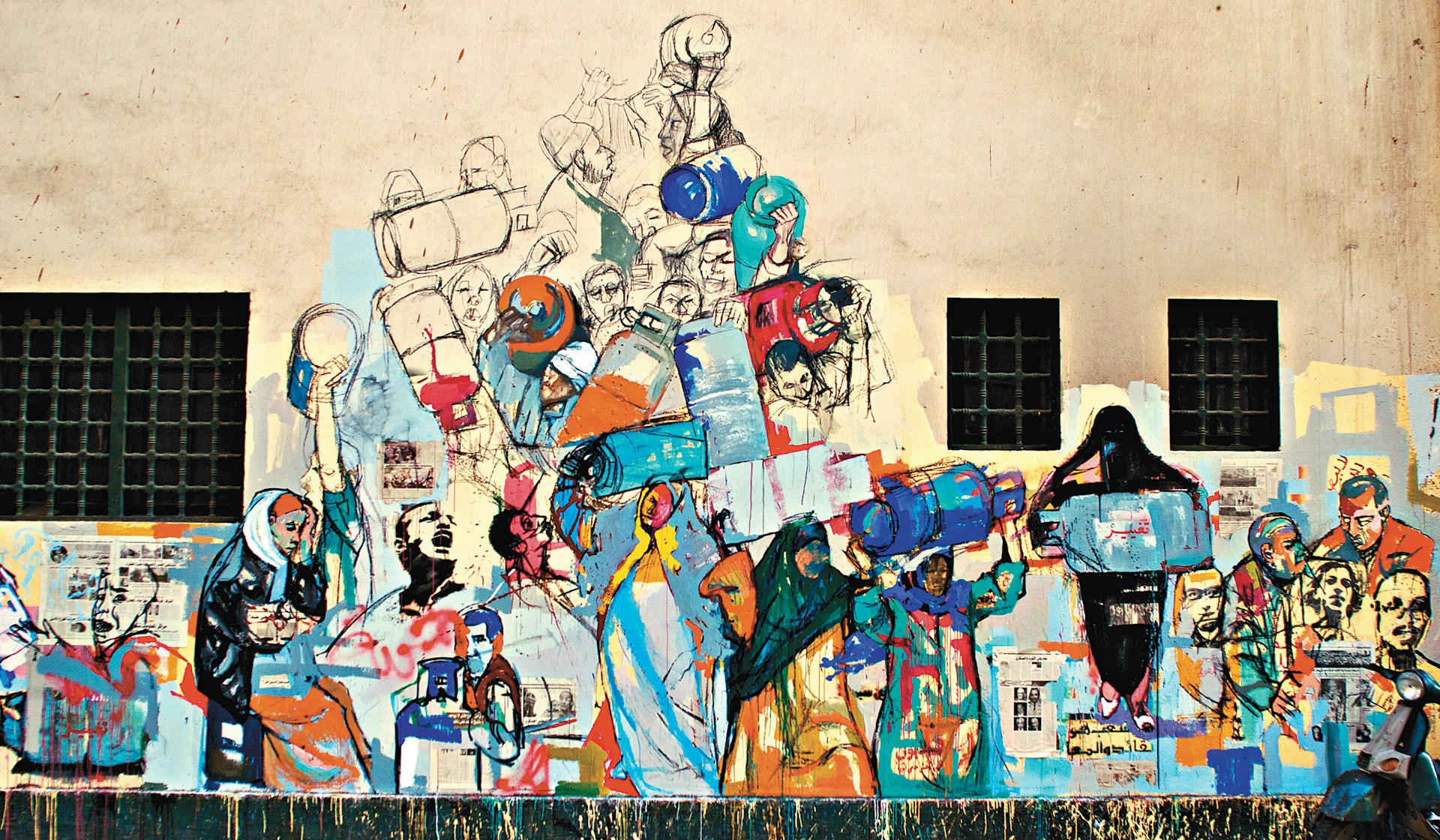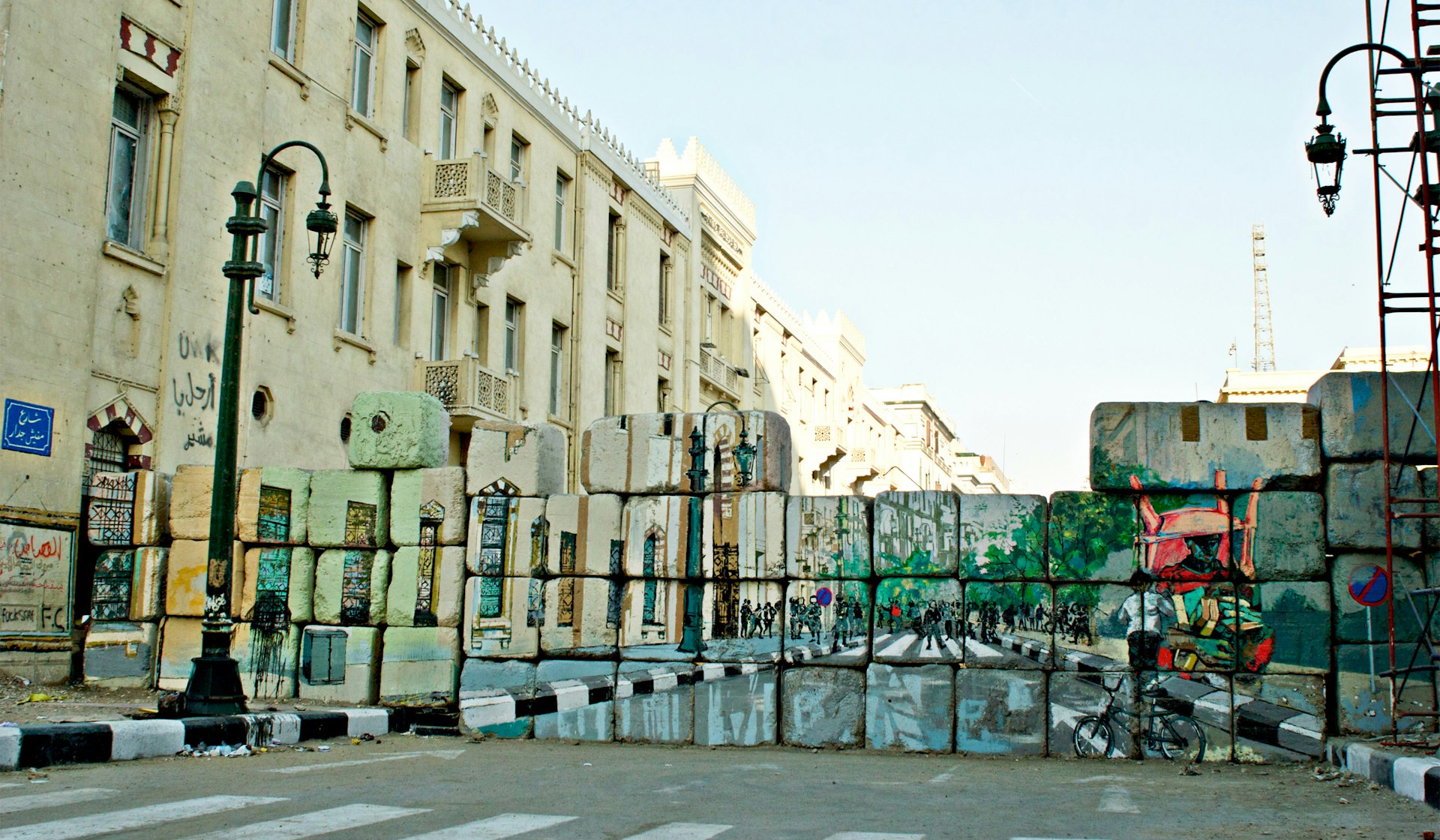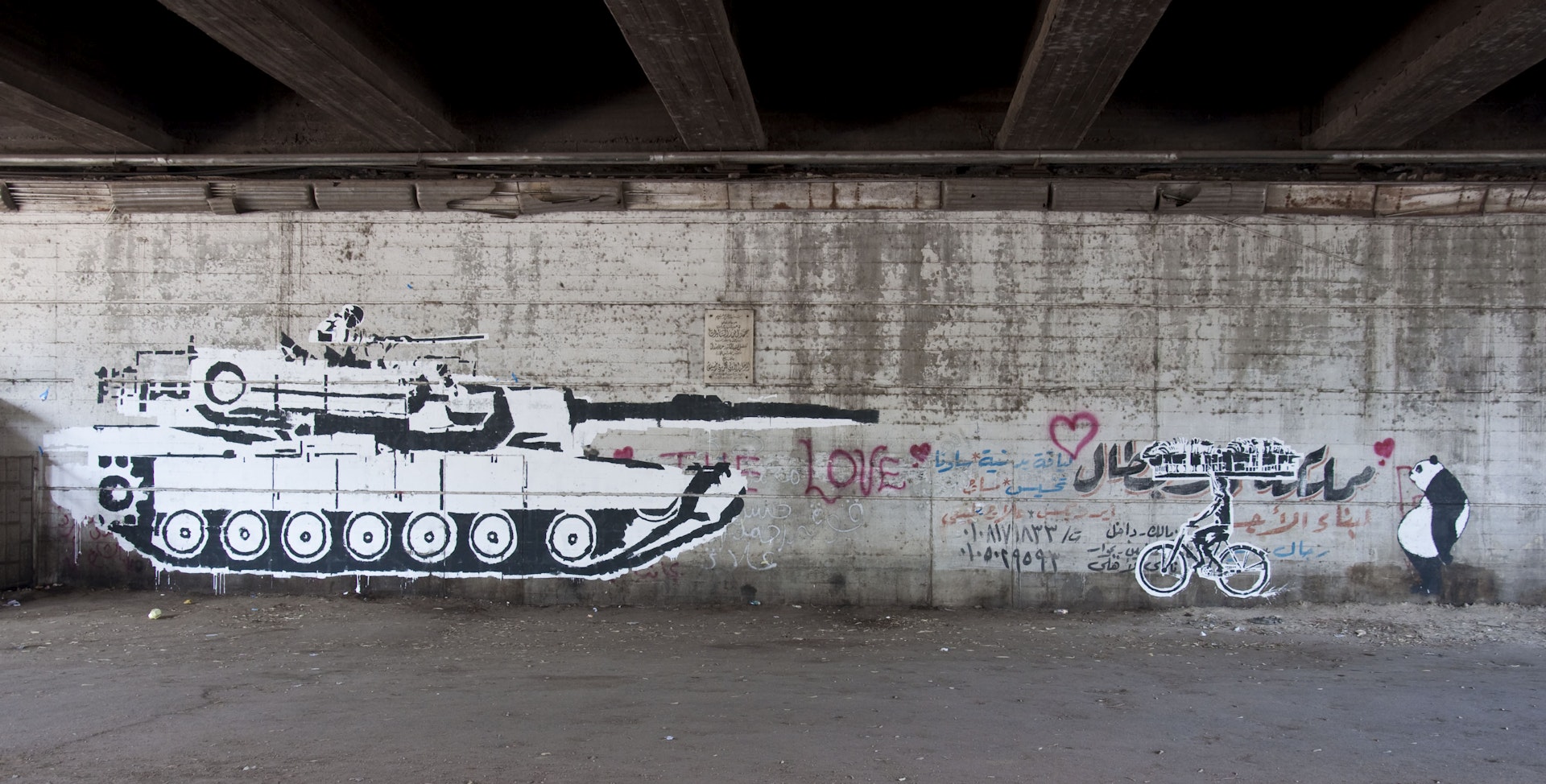
Egypt Now
- Text by Alex King
- Photography by Munir Sayegh. Art by Hanaa Degham
On Wednesday night, Egypt’s army chief Abdel Fatah al-Sisi announced his long-awaited resignation from the military to prepare a run for the country’s presidency. If he wins the election later in the year – as most observers expect him to – Egypt will once again be under the control of a military strongman, just three years after crowds in Tahrir Square brought Hosni Mubarak’s 30 year rule to an end.
After the euphoric scenes of 2011 – where graffiti played a highly visible role in a broad popular uprising – the revolutionary movement that toppled one of the Middle East’s longest-serving dictators seems to have ground to a halt.
Since the 2013 coup d’etat against Mohammed Morsi, Egypt’s first democratically elected president, hundreds of protestors have been killed in clashes with security forces, an estimated 16,000 people have been imprisoned by the new regime and on Monday a court sentenced 529 Muslim Brotherhood supporters to death for their alleged role in the death of a policeman.
To get a sense of the current situation, Huck spoke to Basma Hamdy, an academic, designer and co-author of revolutionary street art anthology Walls of Freedom, who explains that Egypt is currently going through a traumatic moment.
To what extent has freedom of speech been repressed since the Sisi coup?
It is a gradual but consistent repression that will probably get worse. I just heard of a man arrested for holding up a sign that was questioning what the coup achieved. It wasn’t even referencing the military but was a general, philosophical question. Many activists are still locked up and there are those who equate any criticism of the military with an affiliation to the Brotherhood. People have become intolerant toward the revolution claiming that activists have alienated the majority of Egyptians by refusing to compromise and clinging to unrealistic and overly idealistic goals.
Does street art still have a political role to play in post-coup Egypt?
It still has a role to play. Just this past November, a huge pink and red military camouflage was painted by the artists of Mohamed Mahmoud Street on the anniversary of the battle in that street, with a vulgar phrase that was a threat to the military. In this day and age of citizen journalism, social media, YouTube, etc. you can always reach people and I believe street art will always be a powerful voice in Egypt.
In Walls of Freedom you trace the roots of the 2011 uprising back as far as 1159 B.C. To what extent does today’s revolutionary street art draw on Egypt’s rich cultural, artistic and historical traditions?
There is a direct borrowing from history and also an indirect influence. Ammar Abo Bakr and Alaa Awad are two artists who draw directly from historical references. The murals borrow from and weave together many different Egyptian artistic influences such as Pharaonic reliefs, Coptic manuscripts, frescoes, and folkloric village paintings. Alaa’s work appropriates and contextualises historical references, like Pharaonic temples and tombs, to visually comment on the events of the revolution. While Ammar used rural Islamic folk paintings and Quranic verses to directly criticize the Islamists and the Muslim Brotherhood rule. His martyrs murals transformed Mohamed Mahmoud Street into a large scale tomb.
What new ideas have artists developed?
One of the most interesting innovations was the No Walls Campaign which was initiated by activist Salma El Tarzi in response to the seven military blockades established on streets around Tahrir Square. The security services built walls between November 2011 and February 2012 to close off major streets leading to the Ministry of Interior and other government buildings. The artists painted elaborate opened illusions of the continuing street and announced that the walls would be metaphorically opened through painting. This demonstrated the power of street art and its impact on the people living in the neighbourhood but also everywhere in Egypt.

Ammar Abou Bakr. Photo by Munir Sayegh
What was street art’s most valuable contribution to the revolutionary process?
Street art raised awareness, it asked difficult questions and exposed truths. For example, the stencil of the police sniper who shot directly at protestors eyes in November 2011 was a major step for the role of street art in the revolution. His portrait was sprayed with a ‘wanted’ sign, along with his name and other information. Street art become a key tool for empowering citizens.
Does your average Egyptian acknowledge the role street art played in the revolution?
Yes I believe many Egyptians do and many get quite upset when murals and graffiti get whitewashed because they understand its role in raising awareness, commemorating martyrs, etc. I was once stopped by a man on the street while I was photographing the graffiti on the presidential palace and he insisted that I document every little bit. He said that it was history in the making and should be preserved. Ganzeer wrote about an incident with Ammar Abo Bakr when a crowd in the street stopped them painting a mural of military officers arresting a protestor. I often return back to this incident because it highlights an important truth about Egyptian society: that it’s permeated by corruption and lack of critical thinking, which is a fatal combination.
When a people have been repressed for so long and given no proper education, they are consistently conditioned to believe in corruption and terrified by a mafia-state. Like an animal trapped in a cage for years, will not readily move out of captivity and if they do, they may not survive the wilderness. They need to be equipped with the tools to deal with this freedom. Street art is threatening in many cases because it exposes a truth many Egyptians are trying to repress. They don’t want to know, they don’t want to see, they just want to survive. This attitude is by no means universal, but explains why graffiti is sometimes attacked and defaced.
What do you find most fascinating about Egyptian revolutionary graffiti?
Persistence is what I find remarkable. The insistence of artists to remain in the street for days and months on end to communicate their message. When a mural is defaced they think of more creative ways of restoring it. Ganzeer’s Tank vs. Biker mural witnessed many phases, attacked and whitewashed and edited in various ways and the artists always returned to it. The walls of Mohamed Mahmoud were also painted and repainted.

Ganzeer – Tank vs Biker. Photo by Jo Anna Pollonais
Could you explain why the Chinese government have banned production of Walls of Freedom?
Our publishers – like many other art publishers – print their books in China. We have a very good working relationship with our friends there that make sure that quality and working conditions are according to the best standards. Previously unknown to us, the Chinese government thinks the Egyptian revolution was orchestrated by western countries. They believe Walls of Freedom is counter-revolutionary and have banned its printing in China. We tried to find ways to circumvent the censor, but it soon became clear that this was not a joke and our partners would risk arrest if they tried to print the book in China. Luckily, we found an alternate publisher in Malta and the book has now been released.
Basma Hamdy is co-author of Walls of Freedom, a collaborative book project on Egyptian revolutionary street art, out now.
To read more from Egypt Now: youth, music, street art and revolution in today’s Egypt, pick up a copy of Huck 43 – Street Photography With Boogie.
